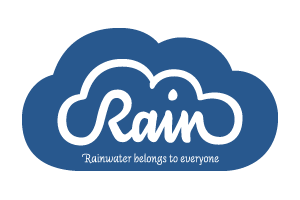
Community Watershed Planning
Can we use the landscape to make water available in an environmentally sustainable way?
Our innovative Community Watershed Planning services can help you increase access to water whilst improving the natural environment.
We take a landscape approach to water management based on 3R. The essence of 3R is to manage natural recharge and to store water within the landscape so that it becomes usable in periods of water scarcity. 3R refers to a unique repertoire of smaller and cost effective techniques that make more water available via:
1. Recharge: optimizing the infiltration of rainfall and runoff water and improving groundwater recharge for example by planting trees.
2. Retention: keeping water in the area and slowing down the outflow, for example by creating stone barriers.
3. Reuse: making the recharged and retained water available for consumption, production or ecologic services, for example through recycling water multiple times.
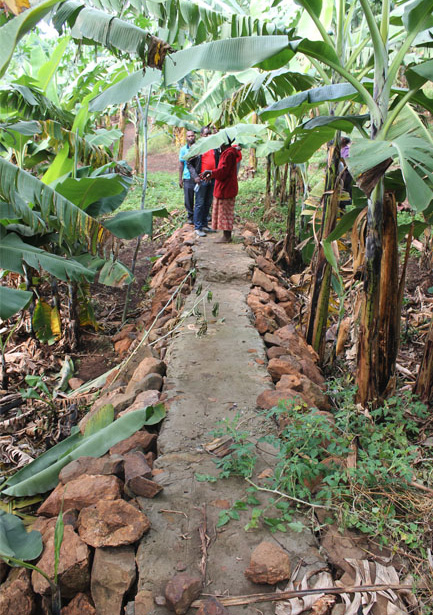
Uganda
HOW DOES IT WORK?
a tailor-made 3R intervention plan in four integrated steps:
1
Capacity Assessment and Baseline
To design an effective community watershed plan, you need a good understanding of the area. We help you to get better insight into the hydrological balance in the area and investigate relevant socio-economic aspects, such as population size, local income generating activities, water needs and access to WASH. In this first phase, we will also support you to set up a multi-stakeholder platform ensuring the right partners are involved from the start.
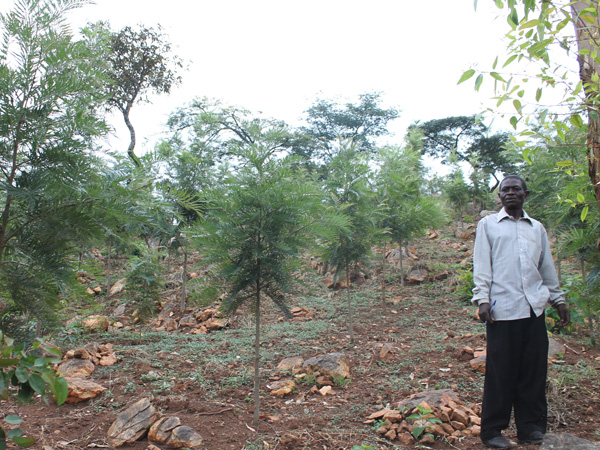
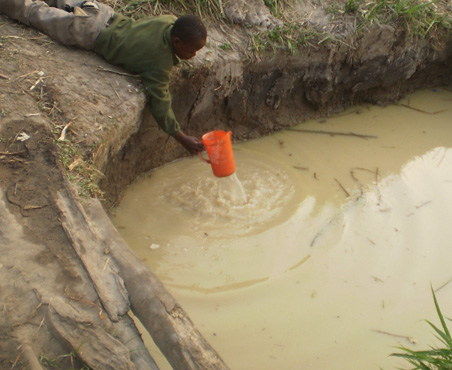
2
Risk- and Opportunity Mapping
The second step in watershed planning we can help you with is understanding and mapping rainfall and environmental and seasonal water-, earth- and waste flows - both upstream and downstream. To be able to come up with an integrated watershed plan, you need to understand potential environmental challenges such as erosion, landslides or pollution. This exercise unveils environmental risks but also opportunities for storing and managing water in an environmentally sound way.
3
Selecting 3R Interventions
Based on the Risk and Opportunity mapping, we support you to design a 3R intervention plan. This plan will give you a detailed explanation of which 3R techniques and methods can be applied in the area. The choice of methods is not only based on technical potential but also on the local capacities and resources for popular uptake or business approaches. For instance, in a fragile socio economic context, appropriate methods are low-cost, technological sustainable and make use of local materials, taking into account the capacity and needs of the people.
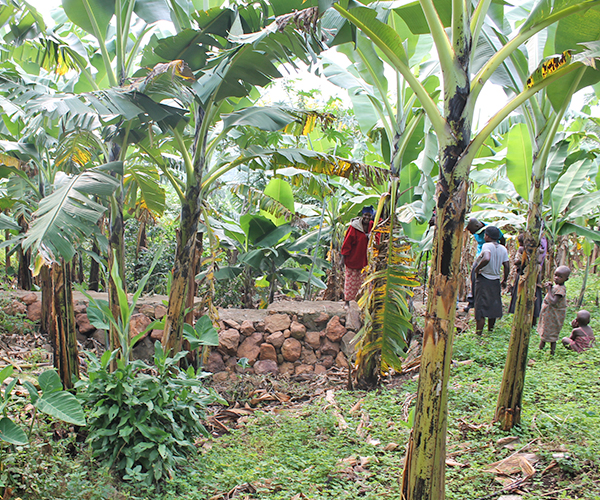
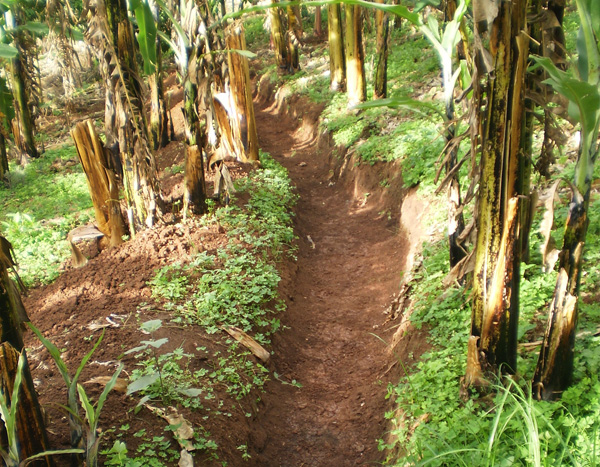
4
3R Training and Implementation
The success and sustainability of water resource management is determined by the level of capacity of the local community to implement the 3R techniques and methods themselves. To this end, we can support you to train business and organizations in how to build, operate and maintain the techniques. Sharing knowledge and experience on 3R and rainwater harvesting are other important, yet integral components of our approach in community watershed planning.
IMPACT
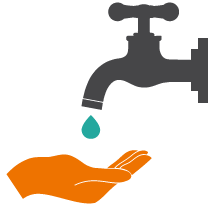
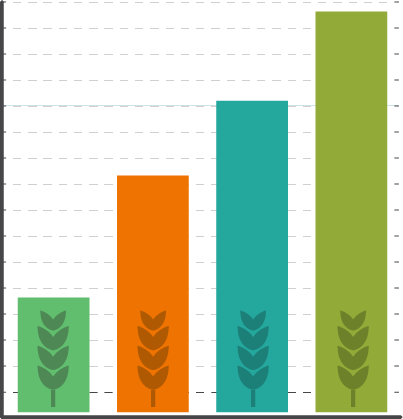
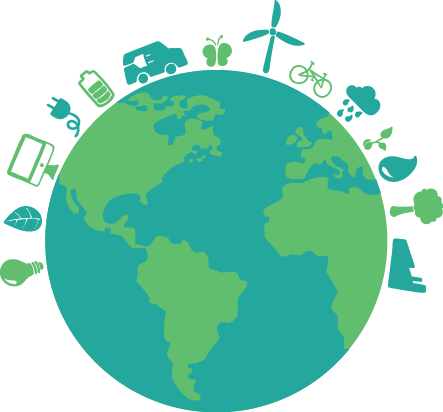
Our community watershed planning services are designed to help you improve access to safe water for drinking and production in your projects. Using 3R will help you:
- Improve and assure water availability in a certain area over a longer period for a greater number of persons
- Make more water available for multiple use such as farming, leading to higher production rates and thus food security and likely also an increase in income
- Protect the environment and increase climate change resilience
Watershed planning in Uganda
- Customer
- Location
WASH Alliance International
Rwambu, Uganda
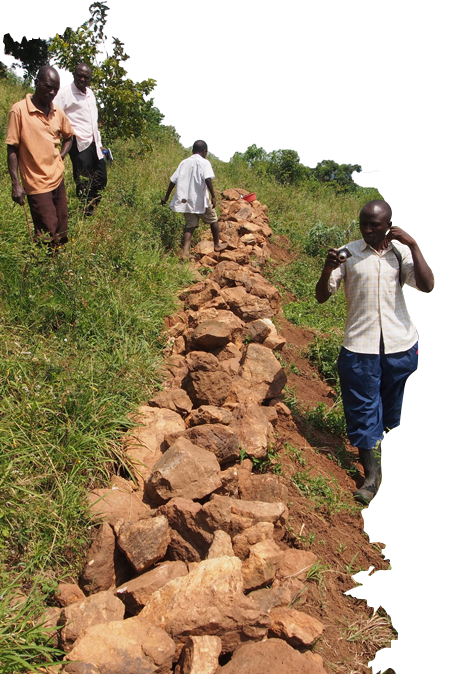
Problems with water in the middle of a wetland? It may seem like an unlikely scenario, but the western Ugandan villages around the Rwambu river once faced this problem. A Risk and Opportunity Mapping showed us that rivers and springs used to provide clean water. As the population began to grow, people opened more land for cultivation on the hills and water drained quickly, picking up pollution and dirt and getting no time to infiltrate and recharge the springs. The result was a shortage of clean water and people resorted to polluted water sources in the wetland. The WASH Alliance International asked RAIN, a brand of Aidenvironment, to work together with local NGOs and governments to increase the availability of drinking water and water for productive use, whilst restoring the wetland. The wetland reduces silt and rubbish in the water, acting as a natural reservoir. To better protect the water sources and the local ecology we supported the partners to develop a unique 3R Intervention Plan for Rwambu, a catchment based water resource management plan with low-cost techniques such as planting rows of trees; letting groundwater recover by building stone walls around the hills to stop the rainwater running off them.
Watershed planning in Mali
- Customer
- Location
Dutch Ministry of Foreign Affairs
Sikasso and Koulikoro, Mali
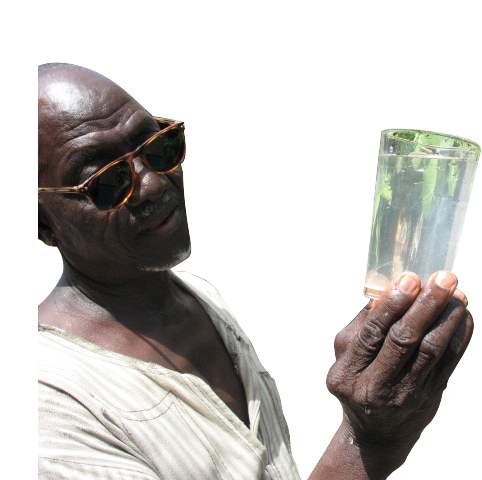
For years, the people in the Sikasso and Koulikoro regions in Mali had to deal with water shortages. To address this challenge, the local government asked RAIN to help them increase the water tables, provide access to sustainable access to water- and sanitation services and restore the environment. First a baseline study was conducted to understand the situation in the two areas. For each area a broad 3R intervention plan was developed. The original idea to construct new dams in the selected catchment areas was abolished because of high costs and environmental implications. Ultimately the decision was made to rehabilitate two existing, but damaged valley dams - the first visible steps in the 3R approach, next to ongoing training of the various stakeholders. Installing stone barriers was another 3R technique used in Mali, which caused a surprising response from farmers. They used their own oxcarts to carry these stones from the hilltops to their fields and constructed new barriers themselves. This local resource mobilization was remarkable, because we assumed that the costs of stone transport would be the limiting factor for the farmers. This case shows the importance of taking into account the capacity of the local community to implement the 3R techniques and methods themselves.
GET IN TOUCH
For more information, please contact Aidenvironment:
info@aidenvironment.org
© 2015 AIDENVIRONMENT - RAIN. ALL RIGHTS RESERVED


